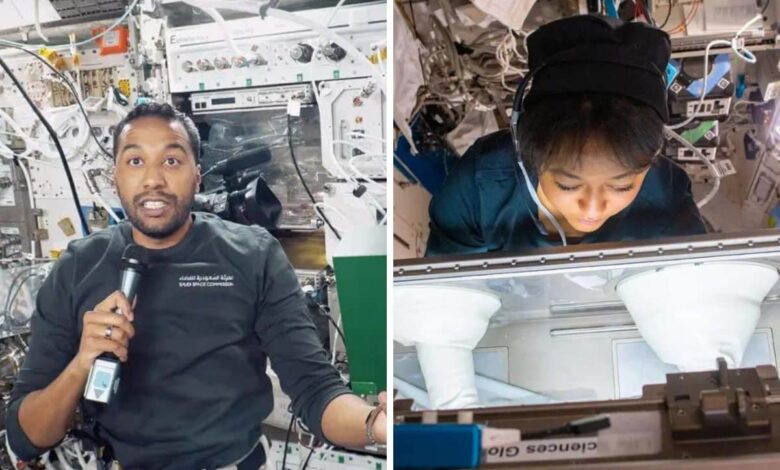Saudi Astronauts’ Rain and Health Space Experiments Pave Way for Human Colony on Mars

Saudi astronauts Rayyanah Barnawi and Ali AlQarni have started their scientific mission AX-2 on board the International Space Station (ISS). They will conduct experiments which could lead to a future human colony on Mars or the moon.
Barnawi and Al Qarni will make the Kingdom of Saudi Arabia’s history in space and science research by undertaking 14 pioneering experiments in microgravity, out of which three will be dedicated to educational and motivational purposes with the participation of 12,000 Saudi students in 47 different locations across the Kingdom in real time via satellites.
This is an epic moment aimed at preparing future astronauts and engineers through quality education and training programs, and participation in scientific experiments, international research, and future space-related missions – all of which will contribute to servicing humanity and achieving the goals of Saudi Vision 2030.
The Saudi astronauts are conducting six experiments aboard the ISS. They aim to better understand the impacts of being in space, microgravity, and a high radiation environment on the human brain and nervous system. The research aims to evaluate the repercussions of space on human health and the safety of such space trips on the human brain.
It will utilise novel neuroscience tools, including measuring blood flow to the brain and the brain’s electrical activity, assessing intracranial pressure by non-invasive assessment of the eye pupil, and monitoring changes in the optic nerve over time to make space trips safer for humans in the future.
The two Saudi astronauts will also do four cell science experiments to investigate the inflammatory response of human immune cells in microgravity. More specifically, their research will be focused on changes in mRNA decay, a process that can turn off inflammation.
In addition, response to therapy is mimicked by utilising the same cellular model. The crew will take RNA samples for analysis on the ground, where the investigators will monitor RNA expression patterns, and excitedly thousands of RNA half-lives will be measured. Results are expected to contribute to a better understanding of space health and uncover biomarkers or potential therapies for inflammatory diseases in both space and Earth.
To improve researchers; understanding of rain-seeding technology, which will contribute to increased rainfall in many countries, the two Saudi astronauts will lead an artificial rain experiment in which water vapour will be condensed on plankton and salt atoms in microgravity, simulating the cloud-seeding process that is used in the Kingdom of Saudi Arabia to increase precipitation rates.
Results will help scientists and researchers devise new ways to provide suitable conditions for humans, including the work of artificial rain, to live in space colonies on the surface of the moon and Mars.
